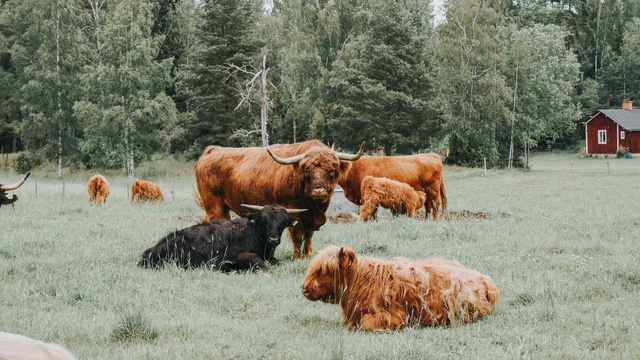Warm-blooded animals, also known as endotherms, maintain a relatively constant body temperature regardless of the environmental conditions. Unlike cold-blooded animals, their internal mechanisms regulate heat through metabolic processes. The average body temperatures of warm-blooded animals can vary between species, typically falling within a narrow range. Below are 10 examples of warm-blooded animals, listed in order from the hottest to the coolest based on their blood temperatures.
Average Blood Temperature: 42.5°C (108.5°F)
Pigeons, like most birds, have high body temperatures to support their energetic lifestyles. Birds, in general, are among the warmest of warm-blooded animals due to the demands of flight.

Average Blood Temperature: 41.5°C (106.7°F)
Chickens are domesticated birds with a core temperature slightly lower than pigeons but still within the high range typical of avian species. Their high metabolic rate helps maintain this temperature.

Average Blood Temperature: 38.3°C to 39.2°C (101°F to 102.5°F)
Dogs have a slightly variable body temperature depending on size, age, and activity level. Their ability to regulate heat through panting makes them excellent at maintaining their body temperature.

Average Blood Temperature: 38°C to 39°C (100.4°F to 102.2°F)
Cats are well-adapted to retaining heat due to their domestication from desert-dwelling ancestors. Their temperatures are fairly similar to those of dogs, though they often appear more tolerant of heat.

Average Blood Temperature: 37.2°C to 38.3°C (99°F to 101°F)
Horses are large animals that can maintain a stable temperature despite their size. Their thick coats and muscular build help in retaining heat, while sweating allows for cooling down in hot environments.

Average Blood Temperature: 36.5°C to 37.5°C (97.7°F to 99.5°F)
Humans, being one of the best-known examples of warm-blooded animals, regulate their body temperature within a narrow range. Sweating, shivering, and the regulation of blood flow help maintain this temperature in different climates.

Average Blood Temperature: 38°C to 39°C (100.4°F to 102.2°F)
Cows, as large ruminant mammals, maintain a core temperature similar to other large livestock animals. Their body mass helps in conserving heat, while their sweating and panting mechanisms allow for cooling.

Average Blood Temperature: 37.5°C (99.5°F)
Rats, as small mammals, maintain a body temperature similar to humans despite their size. Their fur and fast metabolism help in heat retention.

Average Blood Temperature: 35.9°C to 36.2°C (96.6°F to 97.2°F)
Elephants, despite their enormous size, have a lower body temperature than many other mammals. Their large ears help to dissipate heat, aiding in temperature regulation in hot climates.

Average Blood Temperature: 36°C to 37°C (96.8°F to 98.6°F)
dolphins.html">Dolphins are marine mammals that must maintain a stable body temperature in cool ocean waters. Their thick layer of blubber helps insulate them and maintain heat, while their streamlined bodies help conserve energy.

Warm-blooded animals display remarkable adaptations that allow them to regulate their body temperatures. From the flight-capable pigeon with its high metabolic demands to the aquatic dolphin, these animals thrive in a wide range of habitats due to their ability to maintain a stable core temperature. The listed species illustrate how endothermy plays a critical role in the survival and functionality of various animals across different ecosystems.
animal tags: Pigeon Chicken Dog Cat Horse Human Cow Rat Elephant Dolphin
We created this article in conjunction with AI technology, then made sure it was fact-checked and edited by a Animals Top editor.